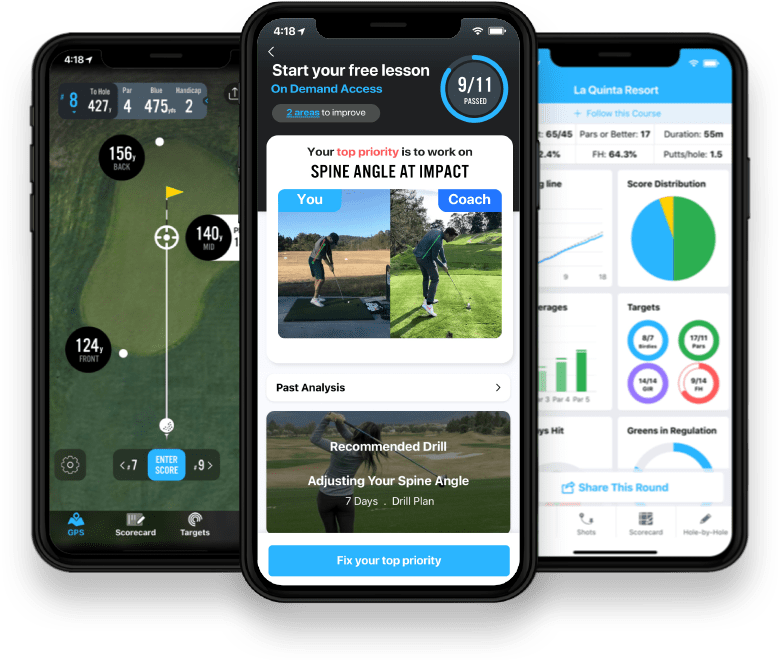Which golf balls go the furthest? What’s the best ball for slow swing speeds? Every year these questions are asked by golfers thousands of times over. But if you think finding a ball that fits your game today is tough, imagine what past generations of golfers had to choose from. Balls made of wood or straw seem almost incomprehensible, yet that’s exactly what our earliest golf ancestors played with. Thankfully, development of the golf ball across the years has been quite outstanding. Here are the moments in golf ball evolution that make that little white ball what it is today.
The First Ball

There’s no historical evidence that the first golf ball was merely a rock used to hit into a hole in the ground, but there are many documented accounts of the game being first played in the 14th century with a wooden ball. One reference even has a “John Daly” playing with a wooden ball in 1550. Wooden balls didn’t travel far (about 80 yards at best), didn’t fly high, and probably felt as jarring as striking a hidden tree root in your downswing. It was basically the kind of ball that today you wouldn’t even bother looking for if you hooked it into the woods. A good start but still work to be done.
The Feathery
It’s not definitively known when the feathery was first developed, but it’s the most famous of all golf balls because it’s considered the first “real” golf ball. Introduced in 1618, it looked like a small baseball and was along a similar design with three pieces of leather soaked in brine water, sewn together, and then stuffed with boiled goose feathers. As the leather dried it contracted, and as the feathers dried they expanded.
The feathery was a very good first ball with excellent flight characteristics and distance up to 175 yards (the longest recorded distance at 361 yards), but was more expensive to make than a golf club and difficult to make perfectly round. The biggest problem, however, was that when the feathery got wet it lost almost all distance or would split open upon impact, rendering it basically useless. Despite these issues, it was still the best available option, and the feathery remained the standard in golf balls for more than two centuries.
The Gutty Ball

The gutty changed the face of golf and opened the sport up to the masses. In 1848 Dr. Robert Adams Patterson discovered that dried sap from Malaysian Sapodilla trees could be heated and formed into a sphere with a resulting improvement in affordability, playability, and durability. This was the first time rubber was used to create a golf ball, and the guttie flew longer and straighter than the feathery, and 200 could be made in one day at the same cost it took to make seven featheries.

The gutty period only lasted from 1848 until the late 1890’s but it revolutionized the game. And almost by complete accident, the gutty also ushered in the golf ball dimple. The first gutties were smooth, but it was discovered that nicks from use made them fly higher and straighter. Thus, hand-hammered gutties were formed to purposefully nick the balls, and after that molds incorporating dimples in a consistent pattern around the entire ball were used.
The Haskell (Rubber Wound) Ball
If you’ve ever hit a balata ball and had it open up and unwind on you, then you already know about the Haskell ball. The Haskell is widely regarded as the first modern golf ball and was designed by Coburn Haskell. Haskell discovered that winding a rubber thread into a ball and covering it with a thin outer shell made from balata sap brought distance, control, and feel to an entirely new level. The haskell flew at least 20 yards further than the guttie, was incredibly forgiving on mishits, and revolutionized distance control and flighting.
The Haskell was not meet with immediate success, however, as some felt they were too lively on and around the greens. With no rules at the turn of the 20th century, exhaustive experimentation with cores included balls with liquid centers made of anything from mercury to melted iron filings.
Ultimately, manufacturers settled on rubber cores, though the specific compositions would be closely guarded trade secrets. The Haskell was the ball a young Bobby Jones used as he learned to play the game. The golf ball you play with today? You can thank the rubber Haskell golf ball. From his design came improved materials for the core and cover of the golf ball in the 60's and 70's. Those replaced the rubber-wound core and the sap exterior and paved the way for the modern golf ball!
The evolution and science behind the modern day golf ball might make you think twice the next time you lose one!
 Try for Free
Try for Free
